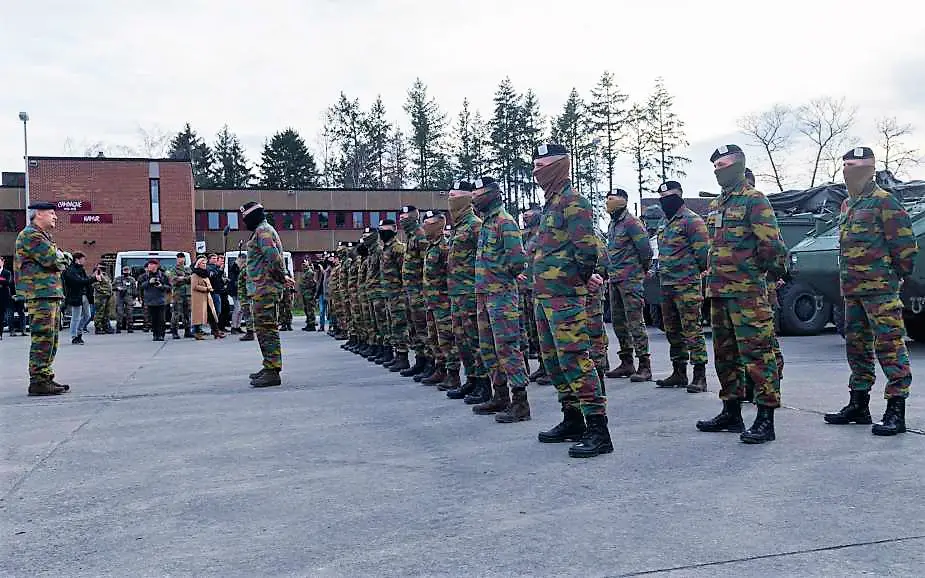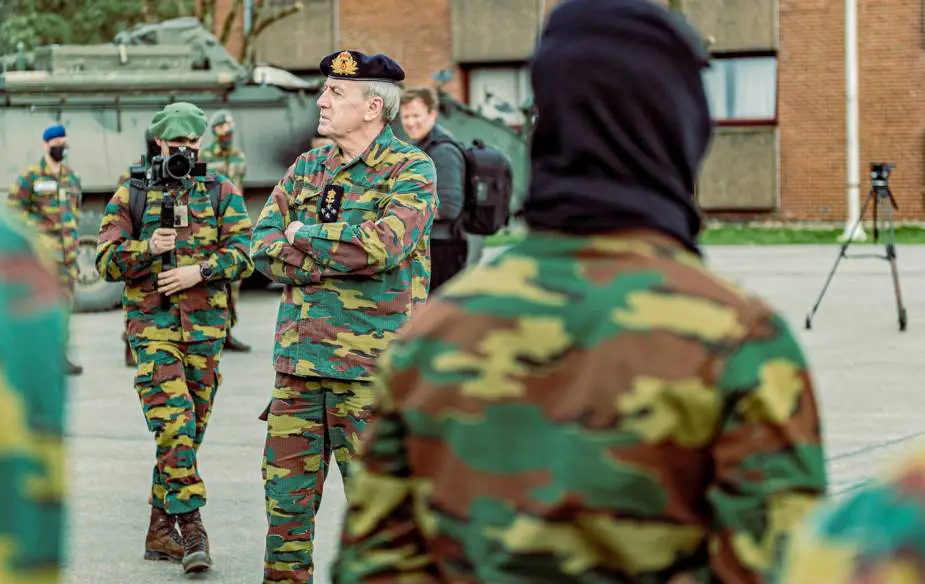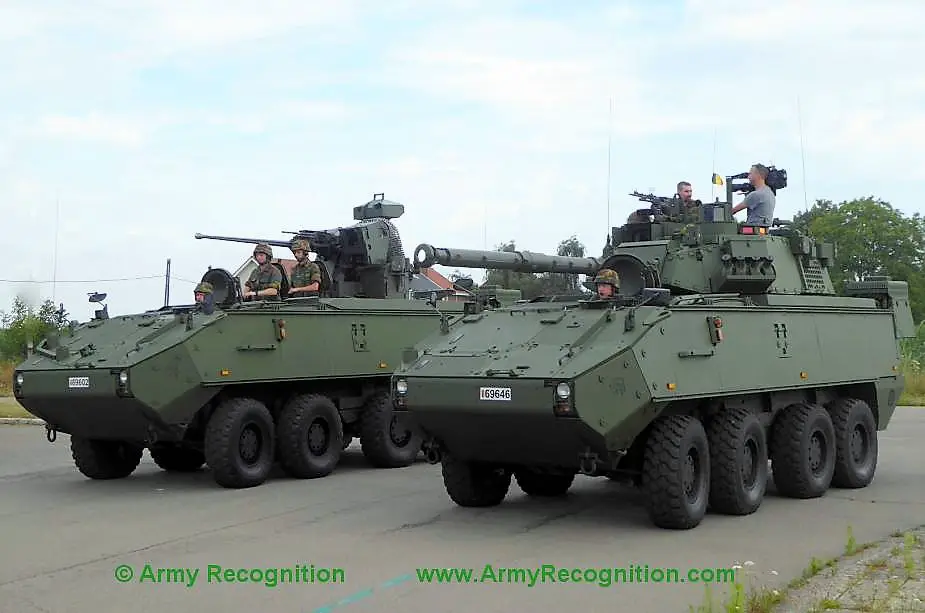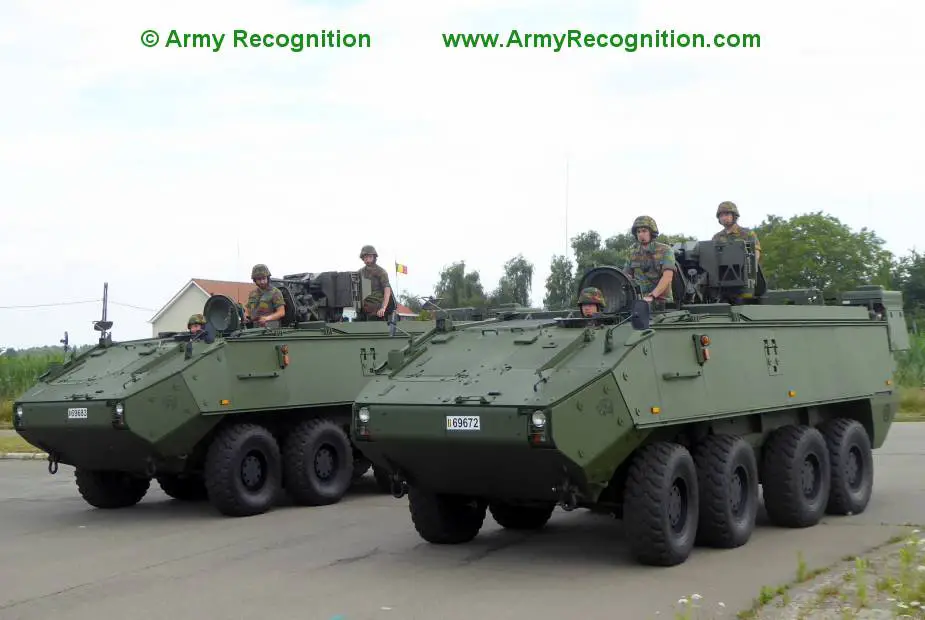Breaking news
Belgium sending 1/3 Lancers Battalion to Romania in framework of NATO VJTF Very High Readiness Joint Task Force.
Some 300 Belgian soldiers will be deployed in Romania next week, under the command of a French battalion. They will carry out a protection and deterrence mission as part of NATO's heightened vigilance.
Follow Army Recognition on Google News at this link

Piranha IIIC DF90 (Picture source: 1/3 Lancers Battalion)
This deployment follows the activation by SACEUR (Supreme Allied Commander – EURope), American General Tod. Walters, of the NRF (NATO Response Force) for the first time in history. Every year, Belgian Defense makes land, air and naval capabilities available to NATO. For this year and within the framework of the VJTF (Very High Readiness Joint Task Force) – spearhead force of the NRF, a total of 500 soldiers are made available, including approximately 300 from the Ground component, an F-16 detachment and a Navy ship. At the current stage, NATO has decided to activate the land part of Belgian capabilities.
The 1/3 Lancers armored unit is the pilot unit of the detachment. The unit is equipped namely with Piranha V DF30 and 18 DF90 combat vehicles (DF stands for Direct Fire). The 1st/3rd Lancers Battalion (1/3 Bataillon de Lanciers) is an infantry battalion in the Land Component of the Belgian armed forces. It is an amalgamation of the former 1st Lancers Regiment and the 3rd Lancers Regiment (formerly equipped with Leopard 115B MBTs, now DF30 and DF90 8x8 combat vehicles) which has been re-rolled into an infantry battalion but maintains cavalry customs and traditions. The battalion is a motorized infantry unit of the Motorized Brigade.

Tuesday, March 1, Minister of Defense Ludivine Dedonder and Chief of Defense (CHOD) Admiral Michel Hofman visited the 1/3 of Lancers in Marche-en-Famenne. (Picture source: Belgian MoD)

Belgian army's Chief of Defense (CHOD) Admiral Michel Hofman (Picture source: Belgian MoD)
Tuesday, March 1, Minister of Defense Ludivine Dedonder and Chief of Defense (CHOD) Admiral Michel Hofman visited the 1/3 of Lancers in Marche-en-Famenne. “For several days, we have been facing a war situation on our continent”, the Minister of Defense, said. “For the first time in NATO history, the VJTF is therefore activated.”
Admiral Hofman and Minister Dedonder spoke to the military before their departure for Romania: “You are going to a country that you do not know and whose language you do not speak. Its not always easy. Training is a good thing, but operations are even better. I wish you good luck. Take care of yourself and others,” Admiral Hofman said. "I have confidence in your abilities and I wish you the best," concluded Minister Dedonder.
Before that, the Defense decided to already send a convoy with military equipment, weapons and ammunition to the Ukrainian border. In the meantime, the Queen Astrid Military Hospital has also activated the necessary personnel and resources to be able to accommodate seriously burned patients.

Piranha IIIC DF30 and DF90 of the Belgian army. (Picture source: Army Recognition)
Piranha IIIC DF 90
In 2006, the Belgian Army ordered Swiss-made Mowag Piranha IIIC 8x8 armored personnel carriers and other variants to meet their armored infantry vehicle requirement, all tracked vehicles (including the Leopard 1 MBTs) being decommissioned and sold. A total of 242 vehicles were ordered. 40 of these vehicles were fitted with CMI Defence 90 mm turret. These are known as Piranha IIIC Direct Fire 90 or DF90. The first vehicles were delivered in 2008. This fire support vehicle has significant strategic and tactical mobility. It can support other Piranha IIIC 8x8 armored vehicles with direct fire. The operational concept behind these mobile lightly armored units is stressed on speed, deployability, and maneuverability to counter enemy forces.
The main role of this Belgian artillery system is to support infantry. It is effective against lightly armored and soft-skin vehicles. It is assumed to not be effective against modern main battle tanks: its 90 mm gun does not have adequate firepower for this role.
This fire support vehicle is fitted with a Belgian CMI Defence LCTS90 two-man turret. It is armed with a medium-pressure Cockerill Mk.8 90 mm gun. The gun is loaded manually. The gun is fully stabilized and can fire accurately on the move at moving targets. It is worth noting that the CMI Defence is a world leader in 90 mm guns and turrets.
A wide range of ammunition is available for this gun. It can also fire newly developed high-efficiency ammunition. The maximum range of fire is about 2.2 km. The indirect range of fire is up to 7.8 km. This gun can also launch Ukrainian Falarick 90 anti-tank laser-guided missiles in the same manner as ordinary rounds. A total of 37 rounds are carried by the vehicle. 17 rounds are stored in the turret bustle and are ready to use. The remaining 20 rounds are stored inside the turret. There is a coaxial 7.62 mm machine gun and another roof-mounted 7.62 mm machine gun. This fire support vehicle has an advanced fire control system with a panoramic commander's sight.
The Belgian Piranha IIIC DF90 fire support vehicle has modular scalable armor protection against small arms fire, mine blasts and RPG rounds. It could be tailored, to suit specific mission requirements. Baseline turret armor provides protection against 7.62 mm armor-piercing rounds. Add-on armor can be fitted for a higher level of protection. The vehicle has a special underfloor design, that provides protection against landmines and improvised explosive devices. This machine is also fitted with NBC protection and automatic fire suppression systems.
This fire support vehicle is powered by a Caterpillar C9 turbocharged diesel engine, developing 400 hp. The engine is located at the front. It is mated to ZF 7-speed automatic gearbox. The vehicle has a modern independent wheel suspension. It is claimed that this vehicle has cross-country mobility comparable to that of tracked vehicles. This vehicle no longer has amphibious capability due to increased weight.
The DF90 is operated by a crew of three: commander, gunner and driver.
Piranha IIIC DF30
This version of the Piranha 3C is unique to the Belgian Army with some 19 currently in service. The vehicle's purpose is to support the infantry by engaging and destroying lightly armored/protected targets that are preventing them from accomplishing their task/mission.

Piranha IIIC APCs of the Belgian army. (Picture source: Army Recognition)



















